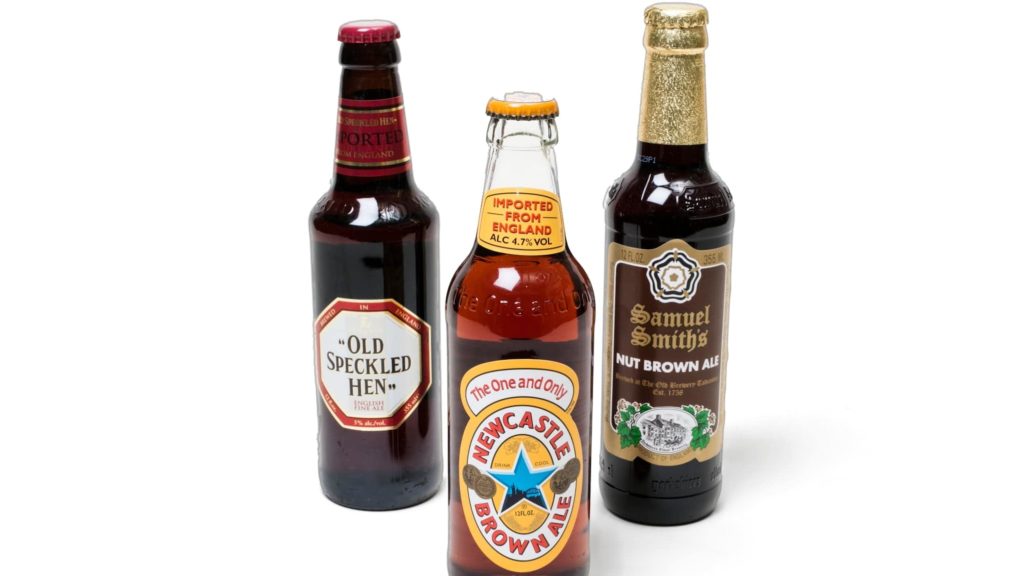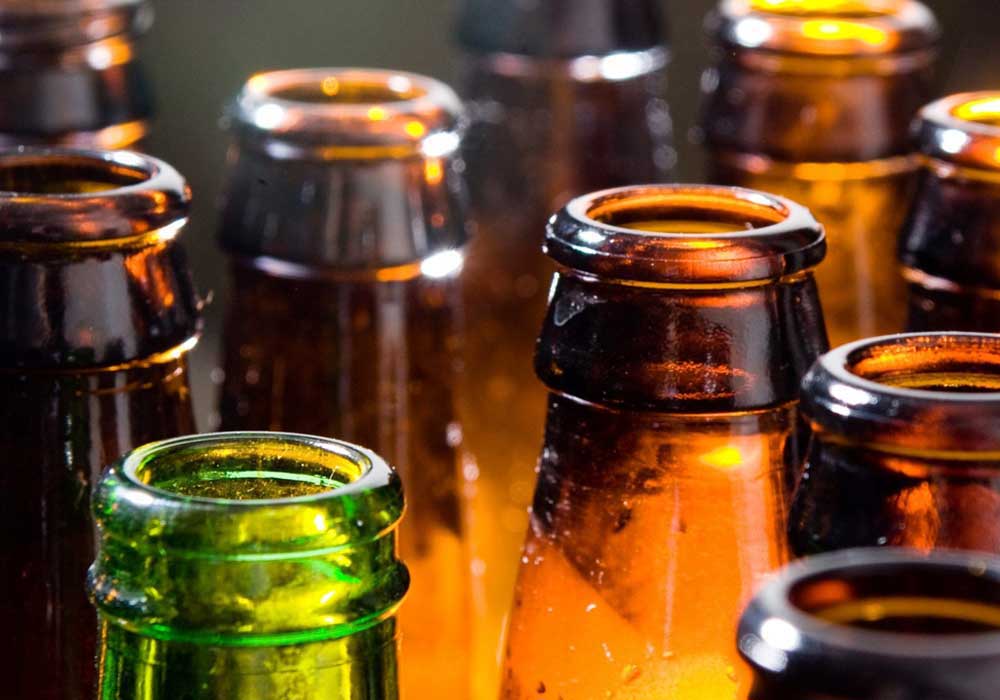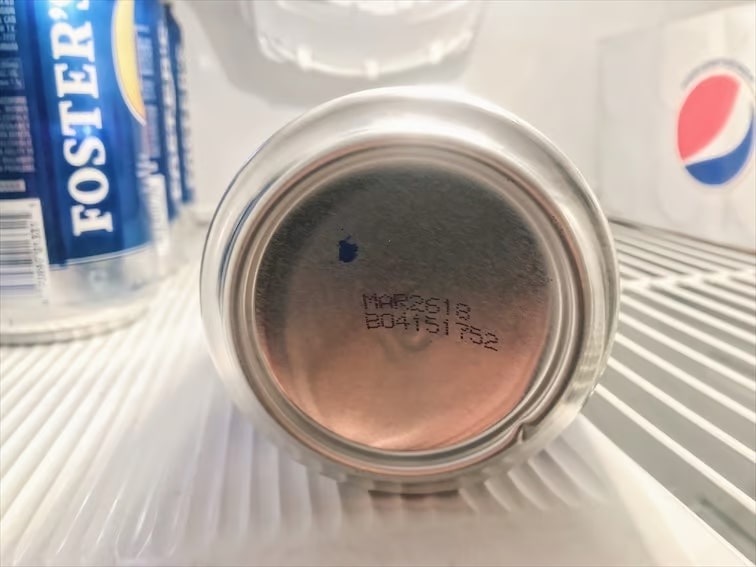If you’re a beer fanatic or simply a person who enjoys an occasional brew, you’ve likely wondered sooner or later, ‘When does beer expire?’ After all, nobody wants to crack open a chilly one best to locate that it’s long gone terrible. In this complete guide, we’re going to delve into the fascinating global of beer shelf life. We’ll discover what reasons beer to move is horrific, a way to shop it well, and whether it is safe to devour expired beer. So, let’s improve a pitcher and get started!
What Causes For Expired Beer?


Before we dive into the specifics of expired beer, allow us to explore the factors that contribute to it.
Oxygen Exposure
Oxygen is a lager’s worst enemy. When beer comes into touch with oxygen, it can cause oxidation, resulting in off-flavors and a stale flavor. That’s why beer bottles and cans are normally sealed to prevent oxygen from infiltrating.
Light
Light, especially ultraviolet (UV) light, can smash down compounds in beer and create a phenomenon called ‘skunky’ or ‘light-struck’ beer. This is why many beers are sold in brown or green bottles, which offer higher safety against UV rays as compared to clean or blue bottles.
Temperature
Extreme temperatures can cause the beer to deteriorate swiftly. Exposure to heat can speed up chemical reactions inside the beer, leading to unwanted flavors. On the other hand, freezing beer can cause it to amplify, doubtlessly leading to damaged bottles or cans.
Understanding Beer Shelf Life
The shelf existence of beer varies depending on numerous factors, consisting of its fashion, alcohol content material, and the way it’s saved. Generally, beer is in its first class when consumed clean. However, most beers are flawlessly secure to drink beyond their ‘first-class by way of’ date.
To decide a beer’s shelf existence, brewers frequently remember the beer’s original gravity (OG), which measures the sugar content inside the wort, the alcohol content material, and the presence of hops, which act as herbal preservatives.
How to Store Beer Properly
To maximize the shelf existence and maintain the best of your beer, follow these critical garage pointers:
Keep It Cool
Storing beer at a consistent, cool temperature is important. Ideally, beer needs to be saved between 45°F (7°C) and 55°F (13°C). Avoid storing it in areas challenged to frequent temperature fluctuations, inclusive of near radiators or in direct daylight.
Store Upright
Unlike wine, which benefits from being saved on its side, beer should be saved upright. Storing beer horizontally can motivate the beer to come into contact with the cap, potentially leading to oxidation.
Avoid Temperature Fluctuations
Temperature stability is key. Fluctuations can cause the beer to enlarge and contract, which may cause leaks and spoilage. Invest in a good beer fridge or cellar if you’re serious about a long-term garage.
Dark and Dry
Keep your beer in a dark location, far away from direct light. A cool, dark basement or a devoted beer refrigerator is good. Excess moisture also can be detrimental, so ensure your storage vicinity is dry.
Does Beer Go Bad?
Now that we have blanketed the basics of beer garage, permit’s solution to the burning query: does beer go bad? The brief answer is sure, but it is more nuanced than that.
Signs of Spoiled Beer


While beer may not turn out to be risky to eat, it could increase off-flavors and lose its appealing characteristics. Signs of spoiled beer encompass:
Skunky Odor: As cited earlier, exposure to mild can create a skunky aroma in beer.
Stale Taste: Oxidation can lead to a stale, cardboard-like taste.
Flatness: Over time, carbonation degrees can drop, resulting in a flat beer.
Hazy Appearance: Some beers may also grow to be hazy or develop sediment.
Safety Concerns
While spoiled beer might not pose fitness risks, there’s an exception. If beer becomes contaminated with harmful bacteria or overseas materials, it may emerge as hazardous to drink. Always use your senses (sight, smell, and taste) to evaluate beer before consuming it.
Beer Styles and Their Shelf Life
Different beer patterns have various shelf lives because of their substances and brewing strategies. Let’s take a closer examination of some famous beer patterns and the way long they generally close:
Lager
Lagers, regarded for his or her clean and crisp taste, typically have a longer shelf existence in comparison to ales. A well-saved lager can last 6 to 12 months or maybe longer.
Ale
Ales, which include light ales, brown ales, and porters, are greatly enjoyed fresh. Most ales have a shelf life of three to 6 months.
Stout
Stouts, with their robust flavors, tend to age well. A nicely preserved stout can close 6 months to a year.
IPA (India Pale Ale)
IPAs are hop-forward beers, and their flavors can alternate quickly. Freshness is critical for IPAs, with a regular shelf existence of three to six months.
Additional Tips for Beer Enthusiasts
Now that you’re properly knowledgeable about beer shelf lifestyles, let’s explore some additional suggestions to decorate your beer-ingesting revel:
- Try Fresh Local Brews: Support neighborhood breweries and revel in clean beer by exploring your local craft beer scene. Many craft breweries offer seasonal or restrained-launch beers that might be satisfactorily loved quickly after purchase.
- Check for Bottling Dates: When buying beer, especially hop-ahead patterns like IPAs, take a look at bottling or canning dates on the packaging. Fresher is commonly better for these styles.
- Experiment with Cellaring: While most beers are quality when fresh, a few high-alcohol or complicated patterns, like barleywines, imperial stouts, and Belgian ales, can gain from getting older. Research and experiment to find out how getting older influences specific beers.


- Keep Your Glassware Clean: Invest in the right glassware for distinct beer patterns and make sure they are smooth earlier than pouring your beer. Clean glassware prevents any undesirable flavors from contaminating your beer.
- Practice Responsible Drinking: Remember to revel in beer responsibly and carefully. Overindulgence can cause health issues and impair your judgment.
Additional Resources for Beer Enthusiasts
To extend your understanding and appreciation of beer, right here are a few treasured assets:
- Books:
- ‘Tasting Beer’ using Randy Mosher: This book is a tremendous guide to information on the different beer patterns, their records, and a way to taste and appreciate them.
- ‘The Oxford Companion to Beer’ edited via Garrett Oliver: A complete reference painting covering all aspects of beer, from its history and way of life to brewing techniques and elements.
- Online Communities: Join online beer forums and communities to connect with fellow beer fans, exchange pointers, and live up to date with today’s traits inside the beer global. Websites like Beer Advocate and RateBeer are exceptional places to begin.
- Brewery Tours and Tastings: Visit local breweries and take part in brewery excursions and tastings. Many breweries offer those reports, providing an opportunity to study at once from brewers and pattern their creations.
- Beer Festivals: Attend beer fairs in your area or plan an experience to attend galas like the Great American Beer Festival (GABF) or Oktoberfest in Munich. These events offer a wide variety of beer patterns to discover.
- Beer Apps: Use beer apps like Untappd to music and price the beers you’ve attempted. You also can discover new brews based totally on your possibilities and notice what others inside the network are taking part in.
Conclusion
In the end, beer does expire, however, the timeline varies depending on factors like fashion, storage situations, and private preference. While it’s best to experience beer as sparkling as viable, many beers continue to be secure to drink past their encouraged shelf existence. Remember to shop your beer properly, avoid exposure to light and temperature extremes, and use your senses to assess its fine. Cheers to taking components for your favorite brew with self-belief!
FAQs:
Q1. Can beer pass bad or expire?
A1. Yes, beer can move badly or expire, however, it is more about the best and flavor deteriorating over time as opposed to it becoming volatile to drink. Proper storage and coping can make a bigger shelf lifestyle.
Q2. How do I know if my beer has long past bad?
A2. Signs of spoiled beer embody a skunky or off-placing scent, a stale or cardboard-like flavor, flatness (loss of carbonation), and a hazy appearance. Use your senses of sight, scent, and taste to assess the beer’s great.
Q3. Is it secure to drink beer beyond its expiration date?
A3. In maximum cases, it’s miles secure to drink beer past its expiration date. However, the flavor may not be as enjoyable as while it’s sparkling. Check for symptoms of spoilage before eating, and if it seems, smells, or tastes off, it is first-rate to discard it.
Q4. What is the satisfactory manner to store beer to maximize its shelf existence?
A4. To maximize beer shelf life, shop it in a groovy, darkish region with a consistent temperature between 45°F (7°C) and 55°F (thirteen°C). Keep it upright to decrease oxygen exposure, keep away from temperature fluctuations, and ensure dry surroundings.
Q5. Can I age beer like wine or whiskey?
A5. While a few beer patterns, inclusive of barleywines, imperial stouts, and Belgian ales, can benefit from getting older, no longer all beers are appropriate for getting older. Research specific patterns and their growing older potential before attempting to age them.
Q6. What is the difference between a beer’s ‘best-using’ date and an expiration date?
A6. A ‘best using’ date on a beer label shows the date till which the beer is anticipated to taste nice, however, it could nevertheless be secure to consume after that date. An expiration date usually indicates that the beer may additionally not be safe or appropriate to drink.
Q7. How long does an opened beer last?


A7. An opened beer, if nicely resealed and saved inside the refrigerator, can hold its first-class for a day or two. However, it can lose some carbonation and freshness over time.
Q8. Can I use expired beer for cooking?
A8. Yes, you can use expired beer for cooking. Depending on the recipe, the beer’s taste may add a unique contact to the dish. Just be conscious that the beer’s altered taste may additionally affect the general taste of the recipe.
Q9. What is the perfect serving temperature for one-of-a-kind beer patterns?
A9. The ideal serving temperature for beer varies by style. Generally, lighter beers like lagers and pilsners are high-quality and served less warm (around forty five-50°F or 7-10°C), even as ales and greater complicated patterns are often served barely hotter (50-fifty five°F or 10-13°C).
Q10. How can I remove a skunky odor from beer?
A10. Once the beer has evolved a skunky scent because of exposure to light, there’s no sensible way to eliminate it. It’s best to save you light publicity by storing beer in dark packing containers and away from direct daylight.
Read More: Top 10 Canadian Beers of All Time
